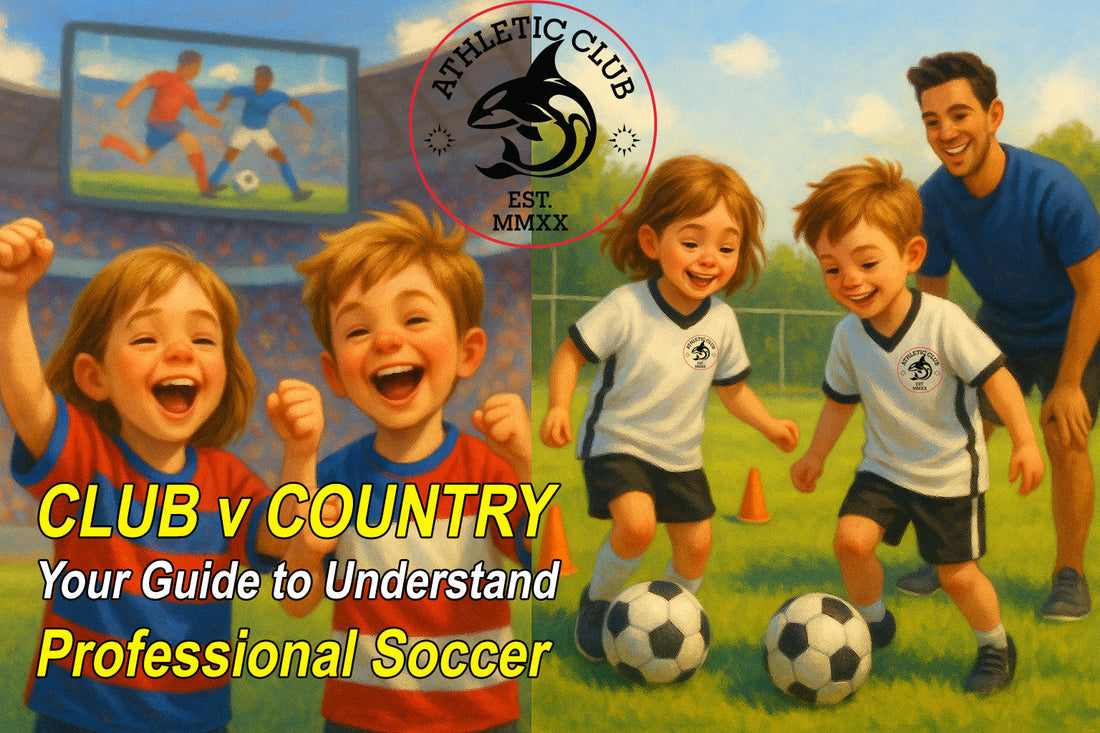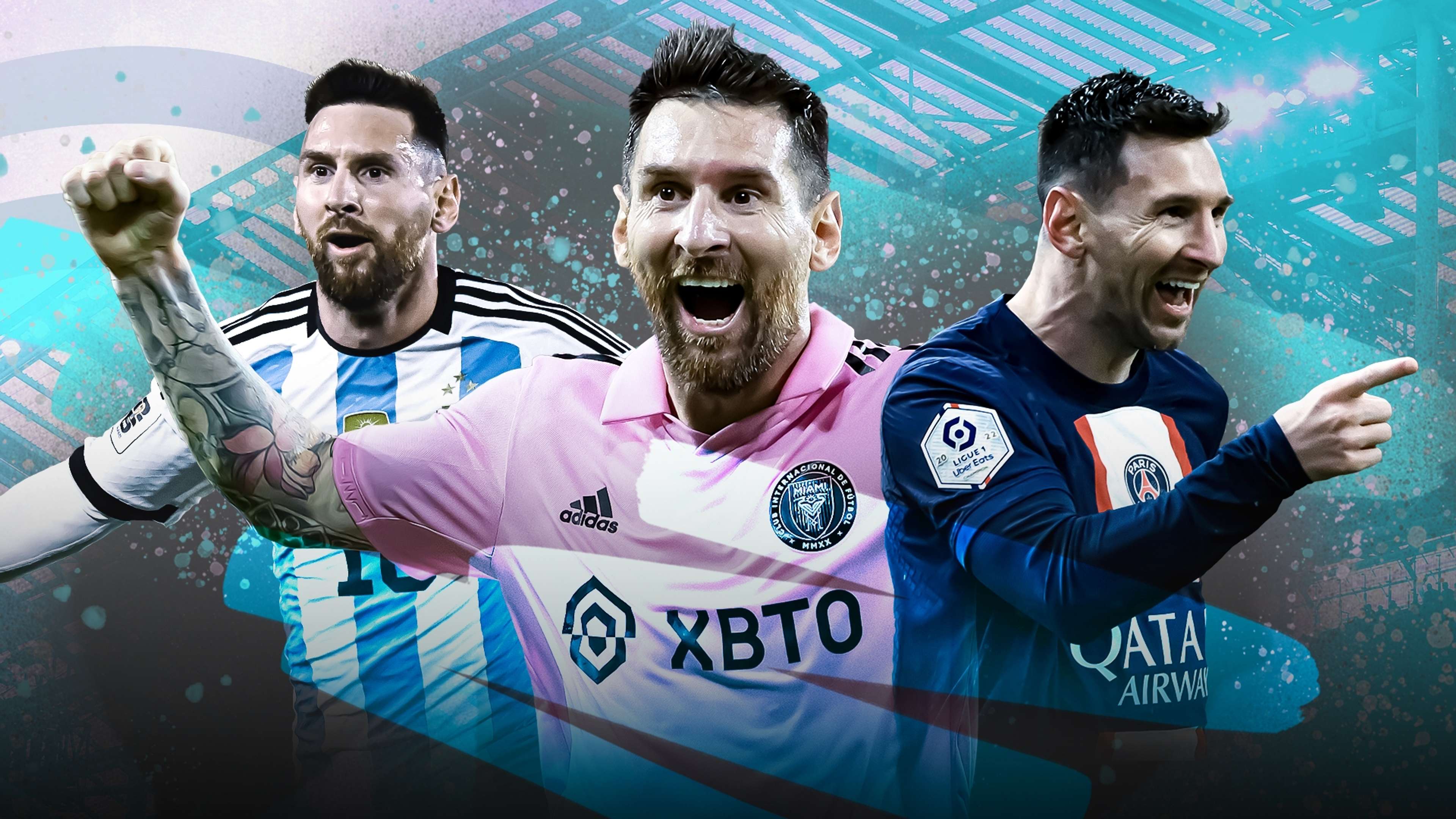
Club vs. Country: A Parent’s Ultimate Guide to Understanding Soccer
Club vs. Country: A Parent’s Ultimate Guide to Understanding Soccer
Ever turned on a soccer game and felt like you were missing something?
You see Lionel Messi scoring for a team in pink, and a few months later, he’s wearing a blue and white striped jersey, playing with a completely different group of guys.

It can be confusing, but understanding this one simple concept is the key to unlocking the entire, beautiful world of soccer for you and your family.
This guide will walk you through everything a parent needs to know, from why players have two teams to how all the major tournaments fit together, and even how to watch the game in a way that gets your kids excited.
The Two 'Teams' Every Pro Player Has
The easiest way to think about it is that every professional soccer player has a "day job" and, if they are good enough, a "national team" they play for out of pride.
Club Soccer Explained: The "Day Job" 💼
A player’s club is their primary employer.
This is the team they practice with daily and play for week in and week out during the regular season.
These clubs compete in domestic leagues specific to their country.
- League Examples: Major League Soccer (MLS) in the USA, the Premier League in England, and La Liga in Spain.
-
Player Examples:
- Lionel Messi's day job is at Inter Miami in the MLS.
- Cristiano Ronaldo's day job is at Al Nassr in the Saudi Pro League.
- When David Beckham moved to the US, he was changing his day job from Real Madrid to the LA Galaxy.
Players can be bought and sold between clubs, which is why you hear about major "transfers."
National Team Soccer Explained: Playing for the Flag
A player’s national team represents their country of birth or heritage.
They are selected to join this team for special tournaments, like the FIFA World Cup or continental championships like the Gold Cup.
A player’s national team never changes.
This is where they play for national pride, not a paycheck.
- No matter what club employs him, Messi will always play for Argentina.
- Cristiano Ronaldo will always represent Portugal.

A Parent's Guide to Soccer Tournaments
Understanding the two team types makes the tournament structure much clearer.
Here's the hierarchy, from the regular season to the biggest stages.
- Domestic Leagues (The Regular Season): This is the foundation. Each country has its own league where clubs compete to be the national champion (e.g., the MLS Cup).
- Continental Championships (The Best Clubs Compete): These are yearly tournaments where the top clubs from an entire continent's domestic leagues face off. Think of it as an all-star tournament for clubs. The most famous is the UEFA Champions League in Europe. In our region, it’s the CONCACAF Champions Cup.
-
Global Showdowns (The Best of the Best):
- FIFA Club World Cup: This is where the champion club from each continent (the winner of each Champions League) competes to be crowned the single best club team in the world.
- FIFA World Cup: This is the big one. Every four years, national teams (not clubs) compete for the ultimate prize in sports.
What Soccer is on TV Now? (Summer 2025 Guide)
This summer is a perfect time to jump in, as major tournaments for both club and country are taking place right here in the United States!
- For Country: The CONCACAF Gold Cup will feature national teams from North America, Central America, and the Caribbean, including the USA and Mexico.
- For Club: The expanded FIFA Club World Cup will bring the world's biggest club teams to the US for an incredible tournament.
- Where to Watch: Most major games are broadcast on channels like FOX, FS1, and ESPN. Many are also available on streaming services like Peacock, Paramount+, and ESPN+.
How to Watch Soccer With Your Kids (And Make it Fun!)
You don't need to understand offside rules to get your kids excited. Try these simple tips:
- Pick a Team by Color: It’s the easiest way to create a rooting interest. "We're cheering for the team in red today!"
- Follow One Player: Instead of trying to track the whole game, just follow a star player. "Let's just watch #10. See how he's always looking around for space?"
- Celebrate the Action: Get loud for more than just goals! Cheer for a great defensive play, a cool dribbling move, or a powerful shot. The energy is what makes it fun.
- Keep it Short: A young child’s attention span is short. Watch for 15-20 minutes, then take a break. The goal is to associate the game with fun, not boredom.
Your Soccer Journey Starts Now
Understanding the difference between club and country is the first step to truly appreciating the global game.
We hope this guide helps you and your family find more joy in watching and playing this beautiful sport.
P.S. - Inspired to get your little one on the field?
You can still join our Livermore, California Summer Pass and start this Saturday!
Use code OFFER for a limited-time 10% discount.
Spots are open for our 2-3 and 4-6 year old groups.